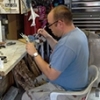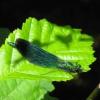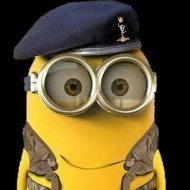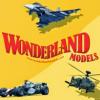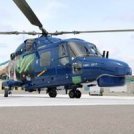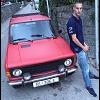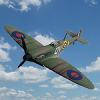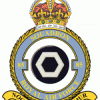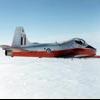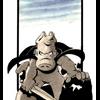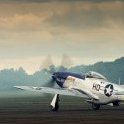Search the Community
Showing results for tags 'AFV Club'.
-
1/35 AFV Club M35a1 Vietnam Gun Truck with Bravo 6 and Verlinden figures along with an awful lot of paint brush bristles. Thanks for looking Si
- 11 replies
-
- 13
-

-
Dear Colleagues Wanting a break from 1/72 scale aircraft for a while I fetched my 1/35 AFV club Valentine out of the attic. I added Bronco early tracks. I was inspired by a picture of troops clambering over Valentines probably in 1941. Believed to be the new establishment of Guards Armoured being shown the tanks of 17th/21st Lancers. The figure was from Passion models I think Hope you like it? Andrew
-
After more than 10 years of entering AFV's in the competition at Telford, I finally picked up a trophy. This one got the best model of an Allied AFV of WWll from IPMS Czech Republic. It's the Academy Honey M3 with AFV Club's suspension and tracks and MB Modellbau's horseshoe turret. There are also a lot of scratch built items such as the sand shields and the large stowage box over the engine deck. AFV Club's suspension and tracks are superior to Academy's items and fitted to the Academy hull with no problems. I changed the turret for the MB Modellbau one as Academy's hexagonal version is incorrect for this tank. The figures came from various sources and have had their arms and legs repositioned and the heads placed with Hornet items. The stowage is a mixture of Resicast, Value Gear and Accurate Armour. The .303 mg is from RB Models and the decals are curtesy of Bison Decals. A very enjoyable build. Regards, John.
-
#25/2016 After the Humber IV, my dad has finished the next in-between armour model, this time the Baby Tiger from AFV Club. The kit is as good as a Tamiya one, the vinyl tracks went on trouble-free. The only, typical for AFV Club, problem were the crappy decals but my dad managed to get them onto the model. Painted with Gunze and Tamiya acrylics. The model shows a tank of the "schwere SS Panzerabteilung 102", still in pristine condition before rolling into Normandy action.
-
My first work in progress, mainly because I never remember to take photos! So as an experiment, most of these will be taken on my Iphone and posted via Flickr with a view to kicking Photobucket into touch. This is the AFV Club M109A2 kit (as you can hopefully see) with the Black Dog conversion kit. So the obligatory box shots. Untitled by phil da greek, on Flickr Untitled by phil da greek, on Flickr So the photos worked! And not to shabby IMHO. Anyone with any experience of building the kit (or the real thing) then pitch in with any tips or photos etc. The aim is to display the gun in a firing position with it's crew doing various things. Already it's out of control. This will be long and it probably won't be pretty, but pull up a chair shipmates, I'm going in!
-
AFV Club have some new Kits and Accessories for us this month, all available to order now. For full details, please see our newsletter.
-
- new releases
- afv club
- (and 6 more)
-
There is a great selection of new and re-released model kits from AFV Club due for release in June. For full details, please see our newsletter.
-
- new releases
- afv club
- (and 6 more)
-
Last night I finally finished the last of my first handful of aggressor F-5Es. It is the lovely AFV Club F-5E kit with Wolfpack ejection seat (the kit only comes with the old type of seat). Paints are mainly Xtracolor, and the decals are from the great Afterburner Decals sheet for aggressor F-5s. I have eight more AFV Club F-5E/F/Ns on the bench at the moment, so this won't be the last F-5 from me you will see here. Jens
- 26 replies
-
- 32
-

-
Hello chaps The model presented was a part of the F-5 group build. More on the build can be found on this link: http://www.britmodeller.com/forums/index.php?/topic/234991709-afv-148-f-5f-tunisian-af/ for more info and pics of the finished model, please check: http://militaryaviation148.blogspot.si/2016/01/f-5f-tiger-armee-de-lair-tunisienne.html Thanks for looking in
- 18 replies
-
- 26
-

-
Well I've given up trying to resist joining in on this GB and thought I would throw my hat in the ring with an AFV Club 1/48 F-5F that I will build as an aircraft operated by the Islamic Republic of Iran Air Force. Iran is probably the most important operator of this classic aircraft and has used every model from the F-5A through to the F-5F and is now producing it's own upgraded versions, in fact Iran (then the Imperial Iranian Air Force) was the first country to operate the aircraft when their F-5A's were delivered in February 1965. The kit I will be using is the by now familiar AFV Club F-5F which seems to have some very good details both inside and outside the airframe. I will be building pretty much out of the box but will add a few homemade details to the seats and cockpit area. Anyway here are the ubiquitous box and contents pictures.... The kit does come with markings for an Iranian machine (and a very tempting Jordanian one!) but I will be using a set from Hi-Decal which has markings for 3 F-5E's and one F-5F all in Iranian markings. The markings are for an F which is still in use today and has a large Tigers head one on side of the tail and an Eagle on the other, I am unsure whether to use these tail markings or to build an aircraft as it would have looked during the Iran-Iraq War, here are some pictures of the decals and the option on the sheet that I will use in one way or another.... Hopefully I will be able to get some work done tomorrow and be able to post an update either then or early next week. Thanks for looking. Craig.
-
The Australian Army got involved in Vietnam from 1965 onwards but it wasn't until 1968 that they decided to make use of Centurion tanks. Once these tanks were deployed they were operated by the 1st Armoured Regiment of the Royal Australian Armoured Corps. Despite some concerns before being deployed the Centurions proved to be really good at operating in the jungles and paddy fields of Vietnam. Also, much to the surprise of some U.S. Units, the Australians found it was possible to repair even some fairly major combat damage, on the Centurion, while it was still in the field. The kit I have decided to build for this GB is AFV Club's Mk.5/1 Centurion of the RAAC. It is a rather nice kit that includes some etch, rubber tyres and a metal gun barrel. This will be my first, proper full sized 1/35 tank build, the only previous 1/35 kit I've built being Tamiya's Panzer Kampfwagen II Ausf. F/G. I won't be starting this build properly just yet as I'm trying to finish two Mk.I Spitfires for the BoB GB. Knowing me though I will probably end up starting some bits and pieces before properly getting started. The box art: The contents: ..........wow that looks like a lot of parts! I also picked up a Mantlet Cover as Centurions in Vietnam had them fitted: Over the next couple of days I'll post some closer up photos of the sprues. Kind regards, Stix
- 142 replies
-
- 10
-

-
Dear Friends Here is the AFV Club late M5A1 in a 'Belgian 44' scene and on its own. The crew named this one 'fish n chips' so I had to do it! Hope you like it? Andrew
-
M60A1 Patton Main Battle Tank 1:35 AFV Club The M60 was one of a line of tanks to take the name Patton, partially because they were all related developments of the same basic principle. The M48 Patton was the basis for the M60, after the need was discovered for a larger gun that could penetrate the frontal armour of the Soviet tanks reaching the front line. The M48 was scaled up to accommodate the 105mm license built Royal Ordnance L7 gun, a re-designed turret and a fully cast hull, mounting aluminium road wheels to reduce weight in non-essential areas. It was the last US tank to use steel as its protection from penetration, and that served the crews well through its long service life. The M60A1 was the most produced version, and was an initial update with better suspension and improved armour, with a larger turret that allowed the crew a little more room. It also had a rudimentary stabilisation system fitted to the gun, although it wasn't capable of the fine control of modern systems, but did allow the gun to stay pointing in the same general direction when aimed. It was wide service during its long career that started in the 60s, both with the US and allied nations. It was sold to the Iranians before the revolution, so some of the remaining operational Pattons were pressed into service during the Iran/Iraq was in the 80s. It was finally retired after service in the First Gulf War, where the Marines used it exclusively for their part in the campaign before reluctantly dropping them in favour of the then new M1 Abrams MBT. While out of service with the US, it is still a potent tank, and is still in service with minor operators throughout the world. The Kit I always look forward to AFV Club kits, as they appeal to this modeller, and give the impression that they are passionate about what they produce. When this box landed on my cluttered desk I was keen to see inside, particularly as I had seen one in the flesh only the week before. Arriving in AFV Club's usual white themed box with a painting of an M60 on the way somewhere, the box is stuffed full of sprues, with nine in total moulded in an olive green styrene, plus the lower hull tub. There is also an M2 Machine Gun on a section of sprue, a substantial clear sprue, two rubber-band style tracks, two sheets of Photo-Etch (PE) brass, a small bag of flexible styrene parts in olive and black, a spring, a bag of rubbery o-rings, a turned aluminium barrel, length of synthetic cord, decal sheet and of course the instructions. First inspection reveals lots of lovely casting detail on the hull and turrets, which is accompanied by raised welding-beads, casting serial numbers where appropriate, and very fine raised location point lines for parts that butt-fit to the main parts. The level of detail on the parts is excellent, with grilles, tiny welding beads between sections of parts and ultra-fine mouldings that push the limit of injection moulding technology. Once you've had a look at the sprues and perused the visual history of the different variants on the page before the instructions, it's time to start cutting parts off the sprues. The lower hull is moulded as a single part with casting texture moulded in, but as it has been done using sliding moulds, there are some small seams between the suspension mounting points, so scrape these off and make good with some stippled Mr Surfacer or your chosen texturing method. Then you can add the suspension mounts, bump-stops and the driver's lower escape hatch, followed by the torsion bars and swing-arms, plus the final-drive housings at the rear of the hull. Towing shackles, hitch and rear light-clusters are added to the rear bulkhead, and then it's time to do the running gear. There are fourteen pairs of road wheels, which are built up from two individual wheels glued together around a small O-ring as a change from poly-caps. The drive sprockets are made up from three parts, the central part of which is a complex moulding that stands well away from the rest of the parts of the hull to allow the sliding parts of the mould opportunity for movement. One of mine had come off within minutes of leaving the bag, and I found it on the workshop floor with a little crush damage, which was quickly repaired. They are the most easily knocked-off parts, and without them you'll be screwed, so keep an eye on them! The wheel sets press onto the axles for easy removal during the build, and are wrapped with the rubber-band tracks once the main parts of the upper hull has been finished, using the usual overlapping sections of track to make the joint. There are two links performing this function, and the outer halves are held on only by the centre link, which makes for a weak joint that could be damaged, leaving you with a need for replacement tracks, which Friul make marked ATL-142, with an alternative tread-pattern (lozenge shaped blocks) ATL-143. The driver's compartment is depicted in reasonably good detail in this kit, showing off his cramped space, which added to his limited ability to leave via the top hatch or through the main component, left him with the lower hatch as his primary means of escape. Not a prospect I'd relish under any circumstances. His station is complete with his controls, instruments, seat and various levers, plus vision blocks and more detail that are applied to the underside of the top deck, all of which has plenty of painting call-outs so you're not left floundering. The top deck includes the upper glacis and extends as far as the back of the turret ring, where you add the fuel filler-cap on the starboard corner, as well as the driver's vision blocks, which are made of clear styrene. The driver's top hatch is attached to the hull via a long hinge rod that flips it up toward the turret, requiring the gun to be at the rear for proper exit. The front deck is installed before the engine deck, which has a tapering arrangement of panels, surrounded by a large number of grilles to cool down the powerful Diesel powerplant. These are well-moulded, and have been split into five sections per side to preserve detail, plus another two large panels at the rear bulkhead. Separate grab-handles are added to each one when they're installed, adding to the realism over the usual moulded-in affairs. With the top deck ostensibly completed, the fenders are added, which are split in similar proportion to the deck, with curved flanges added to the rear. A bunch of stowage boxes are built up with separate handles, and are then dotted around the fenders along with some perforated stiffening brackets for good measure. The rear-mounted travel-lock can be built to move on its hinges, and the locking jaws can also be left loose for that occasional change of pose that we never get around to. Whilst at the rear, you have the choice of adding a small grille to the back of the tank, or replacing it with a cast panel and long intake extension tube that has some lovely welding beads moulded in. A pair of flexible styrene bracing "wires" can be added if you want, but these are optional. Adding the front mud-guards and light-clusters sees the hull complete. The turret starts with the gun, which has a turned metal barrel, which is inserted to a recoil mechanism that also carried the 7.62mm coax machine gun and its mount. The spring is loaded into the canister which is then closed over by a bolted lid, and the metal barrel is inserted through this to be glued onto the breech assembly. The inner mantlet/mount is made from two parts, and slides down the barrel and onto the coax MG, and is then installed within the turret body, with a short piston going between the lower breech and the turret ring to control elevation. The lower turret with moulded-in ring is then glued in place, and the either the rubberised mantlet cover and concertina sleeve or its uncovered alternative are placed over the barrel. The two-part bore evacuation system clamps around the barrel at a convenient ledge, an alternative muzzle tip is added (or not), and the turret body is then detailed with lifting eyes, clear vision blocks, stowage hooks, aerial bases and so forth. The towing cables are built up from styrene eyes and cord "cables", which are slung around the lower rear of the turret below the combined PE/styrene turret bustle stowage rack that wraps around the rear. The top of the commander's cupola is moulded in clear to for the multiple vision ports around its perimeter, and has a .50cal M85 machine gun in a mount that provides elevation, while the independent movement of the cupola provides the traverse. This allowed the commander to fire without exposing himself to incoming rounds, but the cupolas were known for their propensity to become detached when the tank was hit by a non-penetrating round, which could have serious ramifications for both the commander's health and the tank, which would be an open target into which grenades could be hurled. A large vision block is fitted to the roof of the cupola, and sighting equipment hangs down underneath it inside, with the full breech and mounting of the MG fully depicted. Careful masking of the interior and exterior will result in a rather good looking cupola. The mantlet of the commander's gun can be left uncovered or by the addition of the provided flexible styrene part it can be depicted covered. Early Cold War tanks all seemed to carry big searchlights on their guns, and the M60 was no exception, and it's a complex one. The body of the device is built from halves that fit around the back plate, plus two horizontal bars on which the mounting bracket fits. A reflector that is as large as the body fixes to the front with a black "thing" in the front, all of which is enclosed behind a clear lens. A couple of grab-rails and latches are dotted around the surface, and it is added to a bracket on the mantlet, with a long articulated rod leading back to an attachment point on the turret top. A couple of jerrycans with PE straps are added to the rear sides of the turret, and a couple of aerials are stretched from sprue, or better yet, from carbon fibre rod that you can obtain from eBay. The turret is a drop-fit to the hull, so remember to either glue it or don't turn it over to look at the underside. Markings A note of warning to begin with. As soon as you get your kit, remove the paper from the decals, as mine had already become quite fond of the decals, and tore a few times on removal, leaving fibres adhered to the decals. There are five options available from the box, and they are disparate enough to please most folks, which is always good. From the box you can build one of the following: Austrian Army – all over olive drab. IDF, Sinai Oct.1973 – All over sand yellow. US Army 3rd Battalion, 3rd Armoured Division, 1977 – Green/orange/black/off white camo. US Army 69th Armoured Regiment – Sand yellow/black/green camo. US Marine Corps – Green/khaki/black/off white camo with a white mantlet. The decals are of merchantable quality, but with fibres of the paper still clinging to the surface, they look a little older than they should. Registration is good, colour density appears so too, and sharpness is good enough. The carrier film is thin and glossy, but extends quite a way around the decals in place such as the serials and badges, which would be better cut away. Conclusion It's a rather nice kit of an important US Main Battle Tank that deserves the detail that has been lavished on it. The rubber tracks are about as good as they can get, but alternatives are available if you feel the need. The inclusion of PE and a turned barrel adds value to the package if you don't like moulded in grilles or sanding the seams of a styrene barrel (who does?), so what're you waiting for? Highly recommended. Review sample courtesy of UK Distributors for
-
Bussing NAG 4500A w/ Bilstein 3T crane AFV Club 1:35 The foundation of the company Bussing goes back to the year 1903. Bussing is considered the oldest German lorry manufacturer. In 1931 Bussing took over AEG daughter company NAG and became Bussing-NAG. This company manufactured many lorry types from 1.5 ton to 11.5 tons payload. The Bussing-NAG type 500 was manufactured from 1939 to 1941. Beginning in 1940, it was designated Bussing-NAG type 500 S. It was propelled by a 6 cylinder, 105 HP diesel engine and had a payload of 4.75 tons. The Bussing-NAG type 500A was developed in the beginning of 1939. It was made in small numbers from late 1940 to 1942. Unlike to the Bussing-NAG type 500S it had all wheel drive. The Bussing-NAG type 4500 S was the successor model of the Bussing-NAG type 500S. Outwardly, it looked different, but it was based on the same technology. It was manufactured from 1942 to 1945. A whole range of alterations were introduced into the series production units of the Bussing-NAG 4500, especially to type 4500A. Nearly 15,000 units of the type 4500 A/S were manufactured until the end of Second World War. The Model The kit is a variant of the previously released NAG 4500S and instead of the flat bed, it is fitted with a Bilstein 3T crane. The box style is typical AFV Club with a photo style picture of the built up kit with a black and white background. Inside the top opening box it is literally stuffed full of sprues. There are fifteen sprues of yellow styrene, one of clear styrene, a small etched sheet, a small decal sheet, seven vinyl tyres, a length of string and four ultra small metal parts, (so small in fact that I couldn’t get a photo of them). Naturally, being from AFV Club, this is highly detailed kit, with lots of parts, so not suitable for novice modellers, in fact it may be a challenge for even an intermediate modeller. Whilst all the parts are cleanly moulded, with some finely rendered details there is a small amount of flash,, but only on a couple of parts. There doesn’t appear to be any signs of other imperfections, but there are a lot of moulding pips. The tyres, although not to everyones taste are very well moulded with very fine tread detail, (certainly for road use, not cross country), and sidewall details, including the manufacturers name. As with most truck kits, most of the detail is on the chassis and suspension parts, and this is no different, so care and attention to the instructions and parts placement will be needed to get all the wheels to sit on the ground correctly as it looks like it will be relatively easy to get the chassis slightly skewed. As with most truck kits the chassis is the first section to be assembled. Consisting of two longitudinal rails which are joined together via six cross members, the rear most one being fitted with a four piece towing hitch with its associated spring mounted behind the cross member. Two five piece accumulator tanks are then fitted, one on each chassis rail whilst the four part exhaust/silencer is threaded through the mid section cross members and out to the left hand side. The front bumper is then fitted with two reflectors and number plate before being attached to the front of the chassis rails. On each rail, two footstep support brackets are attached, followed by the front mudguards, which have the footsteps moulded integrally. The two piece fuel tank is then fitted to the right hand rail via two triangular brackets. To the rear of the chassis, the two reflector arms are attached, and then fitted with the reflectors and the rear number plate to the left hand arm. Up forward the radiator is fitted along with the single hooded headlight and two open headlights, which come with clear lens parts. The two differentials are then assembled, the rear from five parts and the front from no less than twenty six parts, which include the very detailed, and thusly, complex, steering mechanism. The differentials are fitted to the leave spring assemblies, which, in turn are attached to the chassis. Each of the four wheels are built up with an inner hub which has a poly cap fitted into it, followed by the outer hub, then the vinyl tyres are slipped over the rims, and the centre hub glued into place. The wheels are then attached to the axles. Assembly moves onto the engine, which is made up from two halves of the block, to which the cylinder heads are attached, followed by the alternator, auxiliary drive cover and exhaust manifold. The gearbox is then assembled from eight parts, and then fitted with the two piece bell housing before being glued to the engine assembly, which is then fitted with the sump block. The engine is further detailed with the fitting of the intake manifold, three piece air filter unit, coolant pipes, fan belt and fan. The engine/gearbox assembly is then fitted to the chassis, along with the transfer box and the three driveshafts, each having separate universal joints. The gear leaver is then attached to the top of the gearbox. The assembly of the cab begins with the fitting of the foot pedals and hand brake lever, as well as a couple of fixing brackets to the floor. The bench seat base is then fitted, being topped off with a single piece seat cushion. The rear bulkhead is fitted with the single piece seat back, rear window and two hand holds. The interior of the front cab section is detailed with the fitting of the instrument binnacle, switchbox, two windscreens and a couple of fuse boxes. The three cab assemblies are then joined together and the roof fitted. On top of the roof there is a small light fitting complete with clear lens, along with two grab handles, two more of which are fitted to the sides of the rear bulkhead. The cab assembly is attached to the chassis, with the previously fitted gear stick, threaded through the hole in the cab floor. The steering column is, likewise slid into a hole in the floor and attached to the steering rack, before being fitted with the steering wheel. The bonnet centre bar is then fixed between the cab and the radiator. Each door consists of a single piece door, clear window part plus internal and external door handles. These can be fitted to the cab either open or closed positions. The four piece bonnet, with additional PE mesh fitted to the inside of the grille, and pioneer tools to each side panel, is then fitted over the engine. Unfortunately the bonnet sections cannot be posed open without resorting to some surgery. Just aft of the cab there is a large tool box, which is made up from eleven parts, inside there is a space for the spare wheel to be fitted, an eight piece manual winch, and a large catch that holds the spare wheel panel in place. On the rear panel two tool holders are fitted to opposing sides, whilst under the outer edges of the tool box the four piece Jerry can holder and six piece stowage bin are attached, before the whole assembly is fitted to the chassis. Behind the tool box the truck bed, assembled from two longitudinal rails and four cross members, is fitted to the chassis rails via eight U clamps. The actual bed itself is fitted with the six part crane turntable, two storage boxes, two rear light clusters, the two rear wheel arches, each fitted to the bed with two supports, and three cross beams. The bed is then glued into position, followed by the tool box lid and more pioneer tools, with their associated brackets. Two axle stand assemblies are then fitted to the rear of the tool box, whilst the paraphernalia required for the crane is fitted to eh bed, these include various lengths of pole, eyes, hooks and lifting beams. Five Jerry cans are then assembled and slid into their respective slot in the rack, and “locked” off with a large strap. We finally come to the crane itself. The jib is made up form five parts, with seven piece jib extender being fitted to the lifting end. The left hand side of the crane housing is made from three parts, into which the cable drums, with the string provided, wrapped around them, and ends left free, spacers and guides are fitted. The single piece right hand panel is then glued into place with the ends of the various shafts and axles slotted through the panel. The housing is partially closed off with three panels at the front and the upper guide wheel frame fitted to the rear of the roof and a long handle to the left hand side panel. The jib assembly is the attached to the cable housing, followed by the string being passed through the various guide wheels and onto the three piece hook assembly. The completed crane is then mounted onto the turntable fitted to the truck bed. The kit comes with the option of having the four stabilising legs deployed or folded, depending on how the modeller wishes to depict their model. Each rear leg consists of eight parts, whilst the front legs consist of seven. The last part to be fitted is the tool box side panel, covering the spare wheel. On the outside of this panel, two folding legs are attached, allowing the panel to be posed either open or closed. This then completes the build. Decals The small decal sheet actually has quite a few decals on it. There are mostly stencils for the crane, which seems to be covered in them. The rest are the individual truck markings for the three schemes included on the colour charts. NAG 4500A from StuG Abt.209 on the Eastern Front 1942/43 in Panzer Grey overall NAG 4500A from Panzergrenadier Division “Grobdeutschland” on the Eastern Front in Autumn 1943 in a rather purple looking German Grey. NAG 4500A of the 1st Company SPzAbt. 501, based in Tunisia in the Winter of 1942/43 in overall green brown with olive green splotches on the front half of the vehicle. Conclusion There’s not a lot more I can say, other than being an AFV Club kit it is quite complex and detail wise, complete. There is so much you can do with this truck though, with endless possibilities for diorama settings or vignettes. Modify some troops from the spares box for the crew and away you go. It is a very nice kit, but as I said at the top of this review, not one for the beginner. It’s definitely one to test your patience and dexterity, especially as there are some really, really small parts. Highly recommended. Review sample courtesy of UK Distributors for
- 1 reply
-
- 3
-

-
- Pocketbond
- Bussing
-
(and 3 more)
Tagged with:
-
M1132 Stryker ESV Update Set (for AFV Club) 1:35 ET Model This is a highly detailed Photo-etch (PE) and styrene update kit (and it does deserve the term "kit") from our friends at ET Model, which arrives in their usual thick polythene package with all the large frets taped to black backing card, and smaller parts sub-bagged to protect them from damage, and from damaging other parts. Inside the two bags that are held together with the green header card, there is a LOT of brass. Four cards hold five frets of PE, while three smaller frets nestle in a ziplok bag with ten x 10cm 0.6mm diameter ABS rod. In the rearmost bag the light green instruction booklet takes the form of three pages of double-sided A4, walking you through the process from start to finish. The first item of note is a minor mistake on the instructions, which state that a length of wire and three mini-springs are included in the package. They aren't, and aren't used in the build, but there is a tiny fret of PE that isn't noted, so someone hasn't cut & pasted things together quite right. ET Model's instructions take the same format no matter what you are building, with sub-assemblies built up in their own lettered or numerically annotated step to be brought together later in the construction phase. Once you get that straight, they become much easier to follow. In the set you get highly detailed parts to upgrade or completely replace the following parts of the model: Upgraded Steering rack Replacement Trapezoid stowage boxes with working hinges Replacement suspension covers Replacement twin stowage "shelves" on the rear of the vehicle Replacement locking mechanism and protective panels on the rear door Upgraded light clusters Replacement highly detailed winch guides Upgraded wing mirrors and horn assembly Replacement side stowage boxes with highly detailed new parts on both sides Replacement pioneer tool stowage rack with tie-downs Upgraded crew access hatches with handles, locking mechanisms and interior detail Upgraded remote gun mount Replacement ammo box for the remote gun station Upgraded remote weapon, with Mk.19 grenade launcher or M2 derivative .50cal machine gun Replacement brackets on the vehicle roof Replacement wire-cutter upstands on driver's deck and main deck These assemblies are all highly detailed, and where upgrade is the chosen route, you will often need to remove substantial parts of the original to accomplish the task, but it is always worth the effort. The side stowage racks are works of art in themselves, and this is where substantial sections of the ABS rod are used, bent to templates printed on the instructions for your ease. You could replace these with brass rod if you are doing any soldering, but ET are to be applauded for including these small parts, where a great many don't. A huge quantity of tie-down lugs are added to the top of each of the large stowage racks, which will take a fair amount of time to finish, and is best done toward the end to avoid damage to the delicate parts. Conclusion This is a high quality set that will give your Stryker a comprehensive lift in the detail department, as well as replacing simplified or over-scale parts with more representative parts, thereby increasing realism both in detail and scale. The resulting model will be light-years ahead of the original, which is already pretty nice. Check out their pictures of the finished model here. Very highly recommended. Review Sample courtesy of
-
This October AFV Club are releasing a great 1/35 Bussing NAG L4500A German Kfz 100 with a Bilstein 3T Plastic Model Kit to add to your collection. This great kit includes new injected crane parts, fantastic detailing and some precision photo-etch parts! Well worth a look! For full details, please see our newsletter here.
-
- 1
-

-
- new releases
- afv club
- (and 8 more)
-
M60A1 Tank Commander Figure 1:35 HobbyFan/AFV Club This Hobby Fan resin figure is released to coincide with the release of AFV Club's new M60A1 kit reviewed earlier here, and should fit the hatch perfectly, as shown on the boxtop. It arrives in a large card box with the contents pictured on the front fully built and painted to guide you, while the resin parts are cocooned in a long length of bubble-wrap around a Ziploc bag. The figure is split into four parts, with the body having moulded-in legs and a pistol strapped to his chest over his uniform. The arms are separate, as is the head, which sports a "bone-dome" of the period with build-in comms evidenced by the slightly bulged ear covers and boom mic against his cheek. All parts are very well moulded in a cream coloured resin, and have sensible mounting points to their casting blocks that will mean minimal clean-up before construction. Each part has a long pin that fits into corresponding holes in the torso, which should obtain a good joint with a little test-fitting before gluing, but as is always the case with figures, you might need a little filler to reduce the appearance of the joints, even if they occur on natural seams such as the shoulders. A neck scarf/t-shirt helps to hide the join between the head and body, which is useful, and the shoulder joints are aligned with seams as alluded to earlier. Don't forget to wash the parts in warm soapy water to remove the excess mould release agent, as my sample was rather greasy to the touch, and this could affect paint adhesion in a major way. Conclusion A really nicely sculpted figure that has been tailored to fit the new kit from AFV Club, filling the cupola well, and without any of the tedium of adapting the pose to suit its intended resting place. The price is about right for the individual figure these days too. Can we have a driver figure too please? Highly recommended. Review sample courtesy of UK Distributors for
-
AEC Matador AFV Club 1:35 History The AEC Matador was an artillery tractor built by the Associated Equipment Company for British and Commonwealth forces during the Second World War. The Matador was distinctive with its flat fronted cab with gently curved roof, wheels at the corners and a flat load carrying area covered by a canvas or tarpaulin tilt. The cab was made from ash and clad in steel. It was equipped with a winch (7-ton load in its case) like all artillery tractors. About 9,000 Matadors were built, some going to the Royal Air Force (RAF). For the British Army it fulfilled a role between field artillery tractors (FATs) such as the Morris C8 Quad, which towed smaller guns such as the 25-pounder gun-howitzer, and the Scammell Pioneer, used for towing the 7.2-inch howitzer. It was commonly used to tow the 5.5-inch medium gun and the QF 3.7-inch AA gun. The Matador was found to be a generally useful vehicle and was adapted for other roles including carrying a 25-pounder gun.The Canadian Army also used the Matador during the Second World War. The RAF used Matadors in the flat bed form for load carrying. The 6-wheeler Matador Type A was used as a refueling tanker, capable of carrying 2,500 Imperial gallons of fuel and also for towing ashore Short Sunderland flying boats at their stations. In 1942/43 for the North African campaign some Matadors mounted the 6-pounder anti-tank gun to give the AEC Mk1 Gun Carrier "Deacon". Post war the Matador was found in civilian use as a recovery truck, a showman’s vehicle, and general contractor use. It was also useful for forestry work because of its good off-road performance for which some examples are still in use today. The Model This kit has been out for a little while now but is no less welcome here, and comes in the rather stark looking box that AFV Club have become known for, with an artistic impression of the vehicle on the front. Inside there are twelve sprues of dark yellow/caramel coloured styrene, two of clear, a small etched brass fret, a small decal sheet and a length of plastic wire. The moulding of the parts is very clean, with no sign of flash or other imperfections, but with quite a lot of moulding pips, particularly on the small parts, of which there are plenty, and will require some care when removing and cleaning up. The instructions aren’t the clearest I’ve seen and since there are quite a few parts this is a case where you definitely need to read them first and work out exactly what goes where. As with most truck kits, the build begins with the engine, only fortunately this kit only comes with the lower sump area to which the eleven piece gearbox is attached. Before work can begin on the chassis, the winch is built up. This consists of a two piece drum, to which the plastic wire is wound. To the drum the six piece motor is attached. The two chassis rails are then joined together by six crossbeams, the engine/gearbox, and the winch. To the rear of the chassis the three suspension arms are attached, each arm made up of three to five pieces. Three cable wheels are assembled from upper and lower hubs and attached to the rear cross-member followed by two cable rollers, one at the winch and one two thirds along the chassis. At the rear, a third roller is fitted and the winch cable threaded through this and the cable wheels, and then terminated with a hook. The air cylinder is assembled from seven parts including the accumulator bulb. This is mounted on the left hand chassis rail, whilst on the right hand rail the five piece fuel tank is fitted with its two cradles. The four leaf spring assemblies are glued into position, along with the front and rear compression springs onto which the two hooks are fitted. Still with the chassis, the rear differentials is assembled from four parts, if you include the universal joint, and fitted to the rear leaf springs. The front differential is slightly more complicated as it includes the two drive shafts, slid through the two ball joints before being attached to the front leaf springs. Along with the anti roll links and steering rack. The transfer case is made up of three parts to which the front and rear universal joints attached, then fitted to the centre of the chassis. The front and rear differentials are then joined to the transfer box by two driveshafts. The exhaust is fitted next and is made up of a two part silencer with the long pipe leading to the engine and the short pipe angled into the chassis. Each of the four wheels are built up from the single piece hub, onto which the rubber tyre is fitted, followed by a three piece brake drum for the rears and a two piece drum for the fronts. The wheels are finished off with the fitting of the hub centre. The chassis is finished off with the fitting of the two piece headlights to the front of the two rails, for which the modeller can chose whether to fit the clear lens of the styrene hood. Moving onto the truck bed, the large moulded bed section is fitted on the underside with five cross-beams, each of which is fitted with four strengthening “L” shaped channels. Keeping to the underside, the pioneer toold are attached, along with the end beam and two angled plated at the rear. The side panels are each fitted with a footstep, grab handle, and eighteen tilt brackets. The spare wheel is also assembled at this point, and consists of the rubber tyre plus the single piece rim. Three storage boxes, each of two parts are also fitted to the underside of the bed, along with the Jerry can rack, which is made up of six parts, and loaded with two, five part cans. The rear wheelarches are also attached to the underside, aqlong with their associated support brackets and mudguards. Turning the bed over the two side panels are attached, with the right hand panel fitted with the spare wheel. Each of the two batteries are made up from two parts, joined together by the battery cables and fitted in the forward bench mount. Whilst this is a nice touch and could be useful for a diorama scenario, once the associated benh seat fitted, the batteries cannot be seen at all. They could be left out and put in the spares box as I’m sure they will come in useful one day. The bench seat are each made up of the frame, which includes the backrests and two part seat. There are two outrigger seats that can be attached to the main seats or folded out of the way and are made up in the same fashion as the main seats. The rear flap of the bed is fitted with two lengths of cable, (made from the plastic wire provided), which are kept to the board by three straps. The single piece front board is moulded with a window opening, for which a rolled up screen is fitted. The tilt roof is then fitted with twelve vertical stays. The right hand middle stays are then fitted with the rifle rack, made up of the beam and ten eyes. AFV Club have been quite clever with the tilt, in that you can either have the individual side flaps depicted rolled up or lowered, complete with clear “windows” on the mid, and front flaps. This is put to one side to dry properly as we move onto the cab assembly. The cab assembly begins with the interior floor, which includes the engine covers. To this, the brake, clutch and accelerator pedals and fitted, along with the steering column, steering wheel, hand brake and gear column. The drivers seat is then made up from the under seat storage box, seat base, two piece frame, squab base and squab, it even comes with a small handle to raise or lower the seat, well, it would if it was real. With the seat in position, there are a number of fittings attached to the rear bulkhead, along with an electrical box, winch controls and sliding doors for the rear window. The co-drivers seat is much simpler and consists of a base that’s shaped to fit over the wheelarch, and seat pad. Under this seat is a large air filter unit. The underside of the cab floor is then fitted with the two wheelarches and their associated support brackets. The interior of the cab front is fitted with the instrument binnacle, door support brackets, and electrical coil like unit. The quaterlights are then fitted, along with the optionally positioned front air vents. The two windscreen panels are also optionally positioned, either r open or closed and have support arms for use when opened. Each panel is also fitted with a windscreen wiper motor on the inside and the associated windscreen wipers on the outside. The cab front, (ensure you use the right one as there are two in the kit, each for different build periods), is then attached to the main cab assembly and finished off with the roof. The radiator front is then attached to the front and detailed with PE grilles and a filler cap. The sidelights and indicators are then fitted each side of the cab, whilst here is a platform with two supports fitted to the right hand side front. Each door is assembled from one styrene and one clear part, with an optional clear part if the model is to be displayed with the side windows lowered. The doors are then fitted to the cab, either opened or closed, with the cab finished off with the two wing mirrors. The cab and tilt assemblies are then attached to the chassis assembly completing the build. Decals The small decal sheet has markings for four vehicles, three in various variants of khaki and dark earth camouflage and one in Luftwaffe use in a German Grey scheme. The decals include stencils for around the vehicle as well as unit markings for 79th (The Scottish Horse) Medium Regiment, Scotland May 1941, and one from an unknown unit from 1940. Conclusion It’s great to see a kit of this vehicle in production, alongside it’s mid-production brother kit. As is their want, AFV Clubs tuck kits are really well detailed and quite complex to build, but with a little effort and concentration they can turn out to be stunning models. All we need now is for someone to release a nice 5.5” gun to go with it, or a conversion set for the Deacon 6 Pounder vehicle. Very highly recommended. Review sample courtesy of UK Distributors for
-
AEC Matador Crew Hobby Fan 1:35 If you fancy building a diorama or vignette using the AFV Club AEC Matador, reviewed HERE, then you might like to use these figures from AFV Clubs subsidiary Hobby Fan. The small flip top box contains four resin figures, each in a different pose. There is one driver and three troops for the rear seating, two seated and one standing, leaning over the sideboard. The two seated could be used elsewhere, such as the co-drivers position, should you so wish. The mouldings are very highly quality with a superb amount of detail, and although the torso and legs are moulded as one piece the arms and heads are separate, allowing the modeller to pose them as required although some modification will be required to the tunic. All four figures are also provided with separate helmets. Hopefully Hobby Fan will bring out some other figures for the Matador thus allowing more possibilities. Very highly recommended. Review sample courtesy of UK Distributors for
-
Hi Folks, inspired by a visit to MCAS Yuma a few years ago and after having watched VMFT-401 'Snipers' at Yuma I decided to go for an F-5. The kit is the AFV ROCAF boxing with the platypus nose, so I elected to use Fightertown decals 'Adversary Ghosts' and make one in the colours of VFC-13 'Saints'. Its a lovely kit with very crisp detail. The kit was finished with enamels as Xtracolour make the darker blue and the rest were Humbrol.
- 22 replies
-
- 28
-

-
So my second entry (I hope) into the LBAFGB will be a Kenyan Air Force F-5E in 1/48th. Wish me luck!! We shall start with the obligatory shots. The Kit: The Contents: The cockpit detail set; God knows why I bought this as the kit cockpit looks pretty good as it comes!! And the Decals: Decals for this build have been something of an issue as no-one seems to be able to produce the KenAF decal correctly. Note the erroneous matching width of the black, white, red and green bands on the Roundels of the Wirkd set and a missing white band in the International Hawker Hunters set despite it being shown correctly on the instructions: Still, I do have access to some custom made decals so hopefully some of these will suffice! And this is what I will be aiming to build:
-
Hey folks.... Just to highlight my ignorance... (Deep Breath) - Can I build a BRITISH (105) Centurion from either the Aussie (35100) or early Israeli (35159) issues of the AFV Club Centurion or do I need to get (only) the specific kit (35122) ?? I appreciate that there were/are some differences in the engine deck etc, but if you don't ask, you'll never know, right ??. Thanks in advance. Ian.
- 1 reply
-
- 1:35
- British Centurion
-
(and 1 more)
Tagged with:
-
So, after walking past this kit in my local model shop on several occasions, I've finally yielded to temptation and bought my first armour kit. Having been fortunate enough to have driven them a couple times during the early 90s (Who, me Sir? No Sir. It was like this when we found it Sir.) it seemed justifiable from a personal perspective. May I ask the assembled masses of you talented armour modellers about this kit? What, for instance, is the general consensus about how accurately this kit recreates an early to mid-90s British Army machine. How easy will this go together and is there any pit-falls to be wary of? What, if any, aftermarket is there available and can it be recommended? Please excuse the burst of questions but the usual hunt on Google and rummage around Hannants didn't tell me much.
-
My Entry, something small and subtle - an M-40 Big Shot, 155mm Self Propelled Howitzer Also have the AFV separate Tracks ( for the correct type of tracks for a Korean conflict one ) Work starts with the breech block Then the barrel - the turned aluminum barrel is very nice Then make up the mount A coat of Alclad grey primer over everything Then a coat of Alclad Steel, followed by some AK Worn Effects Then sprayed Olive drab over the top, and worked with a stiff brush, and stared some oil weathering Then a coat of matt varnish over the top, some pastels and oils. Still needs more weathering later Then for a change, I made up some of the 'workable' tracks. These look nice, but are very disappointing as far as workable is concerned. If you leave them unglued they spontaneously disassemble - there simply isn't enough friction. However with tiny blobs of CA you can keep em slightly flexible. Peter
-
This is now about as done as its going to get. I will make a base for it at some point, just waiting for a figure to go with it. The track is the wrong type, so if I ever get any of the early/heavy type I will swap it over. Looking at the photos of this tank I now notice that the bolts on the side were missing, but I'm not going back to change it now. Mostly out the box, the only tweak was to remove the blast plates over the front fenders, and replace with some of the spare decking that come in the kit that is for the turreted version. Some careful cutting to get this done, but saves having to buy a resin replacement. Tim

